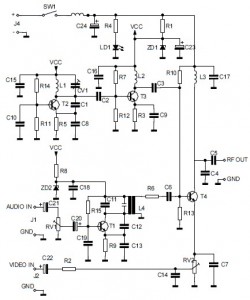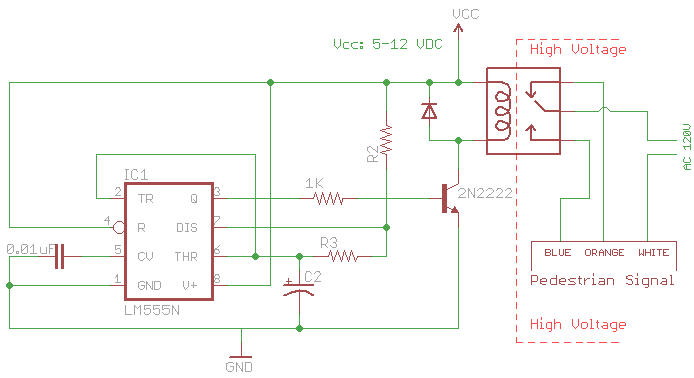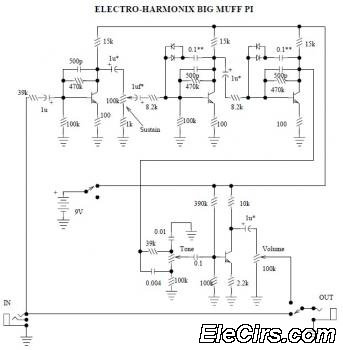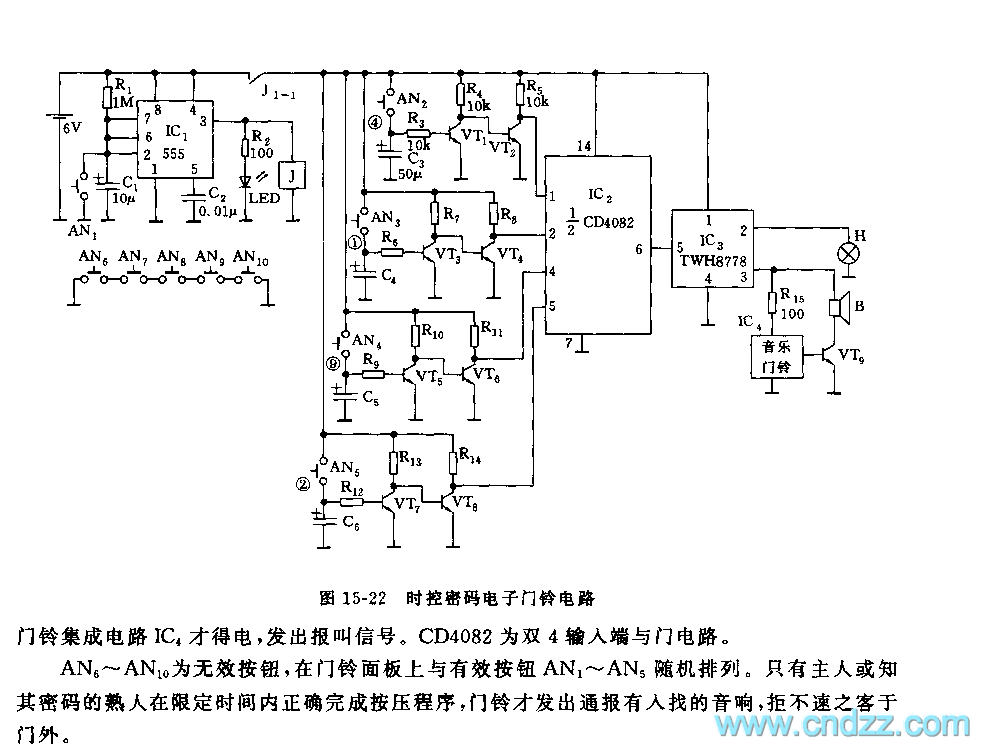
Thermostat controller integrated circuit schematic

The built-in temperature sensor is utilized to control the triac TC620 for temperature regulation. The adjustment circuit, consisting of resistors Rp1 and Rn, allows for modifications to the lower temperature limit. When the ambient temperature exceeds this lower limit, LED1 illuminates, indicating the condition. Conversely, LED2 lights up when the ambient temperature surpasses the upper limit. The selection of the triac BCR's rated current should be based on the load power requirements.
The circuit employs a temperature sensor that interfaces with the triac TC620 to manage heating or cooling systems effectively. The temperature sensor continuously monitors the ambient temperature and provides feedback to the control circuit. The adjustment circuit, which includes variable resistors Rp1 and Rn, allows users to set specific temperature thresholds. By altering these resistors, the lower temperature limit can be adjusted to meet specific operational needs.
LED indicators are integrated into the circuit for immediate visual feedback. LED1 serves as a status indicator for when the ambient temperature falls below the defined lower limit, signaling that heating may be required. LED2 functions similarly, indicating when the temperature exceeds the upper limit, which may suggest the need for cooling or a reduction in heating.
The choice of triac BCR is critical as it must be rated appropriately to handle the load's power requirements. This ensures reliable operation without risk of failure due to overcurrent conditions. The triac's gate can be triggered by the control logic derived from the temperature sensor output, allowing for precise control over the connected load. Overall, the design aims to maintain a stable temperature environment while providing clear visual indicators of the system's status.As shown in Figure by the built-in temperature sensor to control the triac TC620 achieve .png">temperature control . Adjustment circuit Rp1 and Rn can be changed each point and the lower temperature limit temperature point, LED1 lights to indicate that the ambient temperature exceeds the lower limit of temperature control point, LED2 lights to indicate that the ambient temperature exceeds the upper limit of temperature points. Triac BCR rated current selection can actually be charged according to the size of the load power. .png">
The circuit employs a temperature sensor that interfaces with the triac TC620 to manage heating or cooling systems effectively. The temperature sensor continuously monitors the ambient temperature and provides feedback to the control circuit. The adjustment circuit, which includes variable resistors Rp1 and Rn, allows users to set specific temperature thresholds. By altering these resistors, the lower temperature limit can be adjusted to meet specific operational needs.
LED indicators are integrated into the circuit for immediate visual feedback. LED1 serves as a status indicator for when the ambient temperature falls below the defined lower limit, signaling that heating may be required. LED2 functions similarly, indicating when the temperature exceeds the upper limit, which may suggest the need for cooling or a reduction in heating.
The choice of triac BCR is critical as it must be rated appropriately to handle the load's power requirements. This ensures reliable operation without risk of failure due to overcurrent conditions. The triac's gate can be triggered by the control logic derived from the temperature sensor output, allowing for precise control over the connected load. Overall, the design aims to maintain a stable temperature environment while providing clear visual indicators of the system's status.As shown in Figure by the built-in temperature sensor to control the triac TC620 achieve .png">temperature control . Adjustment circuit Rp1 and Rn can be changed each point and the lower temperature limit temperature point, LED1 lights to indicate that the ambient temperature exceeds the lower limit of temperature control point, LED2 lights to indicate that the ambient temperature exceeds the upper limit of temperature points. Triac BCR rated current selection can actually be charged according to the size of the load power. .png">





